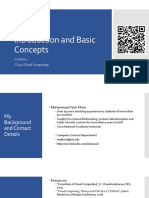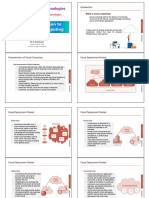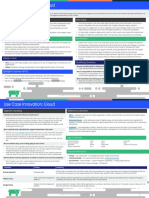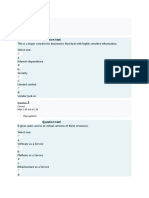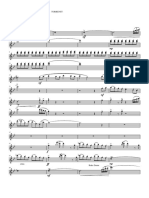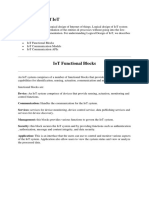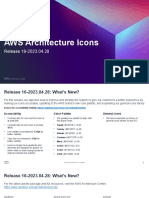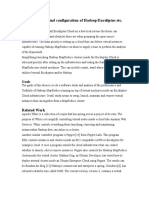Diploma
Cloud Computing
ITBS 105
Chapter 3
Cloud Computing
� Lecture number Title of the lecture/lesson
Objectives
Dear student, at the end of this lecture you are expected to be able to:
1. Define the could computing technology and its importance.
2. Explain the different characteristics of cloud computing .
3. Define the main characteristics of could computing.
4. Determine the different service models in cloud.
5. Determine the different deployment models in cloud.
Objectives
--
--/-- 1
� Lecture number Title of the lecture/lesson
Content
Introduction
Deployment models
Cloud computing
Conclusion
Characteristics of Cloud computing
Resources
Cloud components
Service models
--/-- 2
� Lecture number Title of the lecture/lesson
Mind Map
--
--/-- 1
� Lecture number Title of the lecture/lesson
Cloud computing
➢ In the 70th ASP« Application Service Provider »
➢ In the 90th « Grid Computing »
➢ Virtualisation evolution,
➢ IBM technologies
➢ In 2006 Amazon EC2
➢ 2009 the real development of Cloud
➢ IBM Smart Business Service (of IBM),
➢ Google App Engine (of Google)
➢ Microsoft Azure (of Microsoft)
➢ Sun Cloud (of Sun)
--/-- 3
� Lecture number Title of the lecture/lesson
GENERAL Introduction
4
�Lecture number Title of the lecture/lesson
5
� Lecture number Title of the lecture/lesson
According to the National Institute of Standards and Technology (NIST)
“Cloud computing is a model for providing rapid access to a pool of shared computing resources on demand.”
According to IBM, “Cloud computing, often referred to simply as the cloud, is the on-demand delivery of computing resources, from
applications to data centers to the Internet and pay on use.”
6
� Lecture number Title of the lecture/lesson
Caracteristics of Cloud Computing
Technical aspect
▪ Virtualization based
▪ Shared resources
▪ Measured service
▪ Service must be accessible via a network
▪ SLA (Service Level agreement) based
▪ Effective security
7
� Lecture number Title of the lecture/lesson
Qualitative Aspect
▪ Availability
▪ Agility
▪ Rapid elasticity
▪ Reliability: Simplicity, speed and fault tolerance
8
� Lecture number Title of the lecture/lesson
Economic aspect
▪ Operating expenses
▪ Pay on demand
▪ Open access on demand
▪ Energy efficiency
9
� Lecture number Title of the lecture/lesson
Cloud components
➢ Cloud Provider
➢ Cloud User
➢ Network Provider
➢ Cloud Broker
➢ Cloud Auditor
10
� Lecture number Title of the lecture/lesson
Type of services in Cloud
➢ IaaS (Infrastructure as a Service)
➢ PaaS (Platform as a Service)
➢ SaaS (Software as a Service)
➢ XaaS (Anything-as-a-Service)
11
� Lecture number Title of the lecture/lesson
Calculatio Calculatio Calculatio Calculatio
Storing Network Storing Network Storing Network Storing Network
n n n n
Virtualization Virtualization Virtualization Virtualization
Operating system Operating system Operating system Operating system
Middleware Middleware Middleware Middleware
Developing environment Developing environment Developing environment Developing environment
Excecution environment Execution environment Execution environment Execution environment
Data Data Data Data
Managed
Applications Applications Applications Applications by provider
Managed
Standard IAAS PAAS SAAS by user
12
� Lecture number Title of the lecture/lesson
Type of services in Cloud
➢ IaaS (Infrastructure as a Service)
▪ Ec2, HDFS (Hadoop Distributed File System), S3 (Simple Storage Service), OpenStack …
▪ Advantage :
▪ Administration,
▪ Infinite storage capacity,
▪ Great flexibility of use,
▪ Total control of systems
▪ Disadvantage :
▪ Security,
▪ High investments,
▪ Need for system administrators as for classic on-site server solutions.
13
� Lecture number Title of the lecture/lesson
➢ PaaS (Platform as a Service)
▪ Google App Engine, Elastic Beanstalk ...
▪ Advantage :
▪ deployment is automated,
▪ No additional software to purchase or install,
▪ No infrastructure required,
▪ heterogeneous environment
▪ Disadvantage :
▪ The targets are developers.
▪ limitation of technologies (ex. : Python or Java for Google AppEngine, .NET for Microsoft).
14
� Lecture number Title of the lecture/lesson
➢ SaaS (Software as a Service)
▪ Tools such ERP, web servers, collaborative tools, mail servers (Yahoo Email, Gmail, …), Google Apps, Dropbox, office 365
(collaboratif tool), Salesforce CRM, Google Documents, Facebook, Twitter, MobileMe...
▪ Advantage :
▪ No installation and no more license,
▪ Accessible via a subscription,
▪ No more updates (they are continuous with the supplier),
▪ No more data migration etc.
▪ Pay when use.
▪ Test new software with ease.
▪ Disadvantage :
▪ Limited Software
▪ Security
▪ Supplier Dependency
15
� Lecture number Title of the lecture/lesson
➢ XaaS (Anything-as-a-Service)
▪ SecaaS Security as a Service, BaaS Backup as a Service, CaaS Communication as a Service, DBaaS Database as a Service,
MaaS Monitoring as a Service...
16
� Lecture number Title of the lecture/lesson
Deployment Models in Cloud Computing
➢ Private Cloud
➢ Public Cloud
➢ Community Cloud
➢ Hybrid Cloud
17
� Lecture number Title of the lecture/lesson
➢ Private Cloud
▪ Typical Private Cloud
▪ Managed Private Cloud
▪ Hosted Private Cloud
▪ Virtual Private Cloud
18
� Lecture number Title of the lecture/lesson
➢ Public Cloud
▪ The consumer and the service provider are different organizations
▪ Amazon AWS, Google Cloud, Microsoft Azure, BlueCloud de IBM . . .
19
� Lecture number Title of the lecture/lesson
➢ Community Cloud
▪ or collective Cloud is for sharing infrastructure by several independent organizations with common interests.
➢ The federated model
➢ The trusted third party "broker"
20
� Lecture number Title of the lecture/lesson
➢ Hybrid Cloud
▪ The hybrid Cloud could be any combination of the three types: public, private and community.
21
� Lecture number Title of the lecture/lesson
Conclusion
In this lecture we mainly discussed about the essential and important topics related to cloud computing such :
❑ Cloud computing and its importance.
❑ The main characteristics of Cloud Computing including : technical, qualitative and the economic aspects.
❑ The principal Cloud components such cloud provider, cloud user, network provider, cloud broker and cloud auditor.
❑ The main type of services in Cloud : infrastructure as a service, platform as a service, software as a service and
anything-as-a-service.
❑ The main type of deployment models in cloud : private, public, community and hybrid Clouds.
--/-- 22
� Lecture number Title of the lecture/lesson
Resources
• Gerardus Blokdyk. (2021). "Grid Computing A Complete Guide" - 5STARCooks edition, January 29, 2021.
• Thomas E. and E. Monroy. (2023). "Cloud Computing: Concepts, Technology, Security, and Architecture ", The
Pearson Digital Enterprise Series, 2nd Edition, 2023.
• Dan C. Marinescu. (2022). "Cloud Computing: Theory and Practice", Morgan Kaufmann ( 3rd edition), May 31, 2022.
--/-- 24





